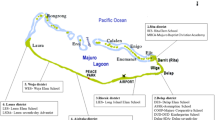Abstract
Enterobiasis (oxyuriasis) is probably the most common helminth, which infects humans. Amongst different age groups, prevalence of Enterobius vermicularis in children is high compared to adults. Oxyuriasis is one of the most significant parasitic diseases of children. This nematode in children can result in loss of appetite, insomnia, grinding of the teeth, restlessness, endometritis, abdominal cramps, diarrhea and etc. Due to important complications of this parasite, the objective of the current study was to determine the prevalence of enterobiasis in kindergarten and preschool children of Amol, Mazandaran Province, North of Iran. A total number of 462 children from 32 kindergartens of Amol were examined for the prevalence of E. vermicularis infection, 2013. Adhesive cello-tape anal swab method was trained to parents for sampling. In addition, a questionnaire was designed and filled out to collect demographic information for each individual. Data were analyzed using Chi square test and multivariate logistic regression for each risk factor. The overall prevalence of E. vermicularis infection was 7.1 % (33). Although infection with E. vermicularis in girls 7.9 % was higher compared to boys 6.3 %, there was no significant difference between gender and age (p > 0.05) whereas binary logistic regression showed significant difference between enterobiasis and age (p < 0.05). The findings indicated that the prevalence of E. vermicularis in kindergarten and preschool children is relatively high and still is an important health problem and should not be underestimated due to being highly contagious infection. Therefore, educational programs and mass treatment should be carried out in order to reduce infection incidence in this area and regular parasitological test and attention to personal hygiene in kindergarten and preschool is of great importance.


Similar content being viewed by others
References
Abedi S, Ezadi S, Davari B (2004) Prevalence of Oxyuris in kindergartens in Isfan using Graham in 1381. Hormozgan Med J 1:63–66
Atash Nafas E, Ghorbani R, Peyvandi S, Imani E (2007) Prevalence of oxyuriasis and some related factors in kindergarten and primary school children in urban areas of Semnan province (2005). Koomesh 9(1):67–74
Bunchu N, Vitta A, Thongwat D, Lamlertthon S, Pimolsri U, Waree P, Wongwigkarn J, Khamsri B, Cheewapat R, Wichai S (2011) Enterobius vermicularis infection among children in lower northern Thailand. J Trop Med Parasitol 34:36–40
Cook GC (1994) Enterobius vermicularis infection. Gut 35:1159
Daryani AB, Ettehad Gh (2003) Rate of oxiuriasis in kinder gardens of Ardebil. Sci Res J Ardebil Med Sch 6(8):18–22
Guignard SAH, Freye L (2000) Prevalence of enterobiosis in the children of Cordobe province. Eur J Epidemiol 16:287–293
Haghi SM, Najm M, Fakhar M, Gholami S, Haghi SFM (2013) Prevalence of Enterobius vermicularis infection among kindergartens in Mazandaran Province, 2011. J Mazand Univ Med Sci 23:241–247
Haswell-Elkins M, Elkins D, Manjula K, Michael E, Anderson R (1987) The distribution and abundance of Enterobius vermicularis in a South Indian fishing community. Parasitology 95:339–354
Hazratitape K, Salari S, Alavi S, Tankhahahi B (2007) Spreading of oxyuris and effective factors on that in Urmia kindergartens. J Urmia Univ Med Sci 17(4):273–277
Hwang K, Tsai W, Lincy L (2002) Detection of Enterobius vermicularis eggs in the submucosa of the transverse colon of a man presented with colon carcinoma. Am J Trop Med Hyg 67:546–548
Maghrebi M (1994) Determination of oxiuriasis in kinder gardens of South of Tehran, Ph.D. thesis
Muller R (2002) Worms and human disease. Cabi Publishing, Oxfordshire
Nasiri V, Esmailnia K, Karim G, Nasir M, Akhavan O (2009) Intestinal parasitic infections among inhabitants of Karaj City, Tehran province, Iran in 2006–2008. Korean J Parasitol 47:265–268
Neghina R, Neghina AM, Marincu I, Iacobiciu I (2011) Intestinal nematode infections in Romania: an epidemiological study and brief review of literature. Vector-Borne Zoonotic Dis 11:1145–1149
Ng YW Ng, Ng SB, Low J (2011) Enterobius vermicularis infestation of the endometrium—a cause of menstrual irregularity and review of literature. Ann Acad Med Singap 40:514
Nithikathkul C, Changsap B, Wannapinyosheep S, Poister C, Boontan P (2001) The prevalence of Enterobius vermicularis among primary school students in Samut Prakan Province, Thailand. Southeast Asian J Trop Med Pub Health 32:133–137
Noor Hayati M, Rajeswari B (1991) The epidemiology and symptomatology of enterobiasis among young children attending a community clinic in Kuala Lumpur, Peninsular Malaysia. Trop Biomed 8:151–156
Nourozian MB, Youssefi MR (2012) Prevalence of Enterobius vermicularis in Babol Medical School, 2011. World Appl Sci J 19:634–636
Nourozian MB, Youssefi MR (2013) Investigation of oxyuris (Enterobius vermicularis) prevalence in kindergarten and primary school children of Babol city, Mazandaran, Iran 2009. Ann Trop Med Pub Health 6:20
Park JH, Han ET, Kim WH, Shin EH, Guk SM, Kim JL, Chai JY (2005) A survey of Enterobius vermicularis infection among children on western and Southern Coastal Islands of the Republic of Korea. Korean J Parasitol 43:129–134
Roberts L, Janovy J Jr (2000) Foundations of parasitology. Mcgraw-Hill, New York
Sha-Mohammadi Z, Ghahramani F, Mahboubi M, Jalilian F, Neiakane-Shahri M, Mohammadi M (2014) Prevalence of Enterobius vermicularis (Pinworm) in Kermanshah city nurseries, using Graham: 2014. J Biol Today's World 3:24–27
Sharif M, Ziaie Hezar Garibi H (2000) Study the rate of Oxyuris vermicularis and vulvitis in children of 2–5 years of age in Sari township kindergarten in 1378. J Mazandaran Univ Med Sci 10(27):59–65
Shoup B (2001) Diagnosis and management of pinworm infection. Prim Care Update Ob/Gyns 8:240–243
Youssefi MR, Mousapour A, Nikzad R, Gonzalez-Solis D, Halajian A, Rahimi MT (2014) Gastrointestinal helminths of the Caspian turtle, Mauremys caspica (Testudines), from Northern Iran. J Parasit Dis 2014:1–4
Acknowledgments
The authors greatly appreciate the financial support received through a research grant from Mazandaran University of Medical Sciences (the Project Number: 216).
Author information
Authors and Affiliations
Corresponding author
Rights and permissions
About this article
Cite this article
Afrakhteh, N., Marhaba, Z., Mahdavi, S.A. et al. Prevalence of Enterobius vermicularis amongst kindergartens and preschool children in Mazandaran Province, North of Iran. J Parasit Dis 40, 1332–1336 (2016). https://doi.org/10.1007/s12639-015-0683-z
Received:
Accepted:
Published:
Issue Date:
DOI: https://doi.org/10.1007/s12639-015-0683-z




